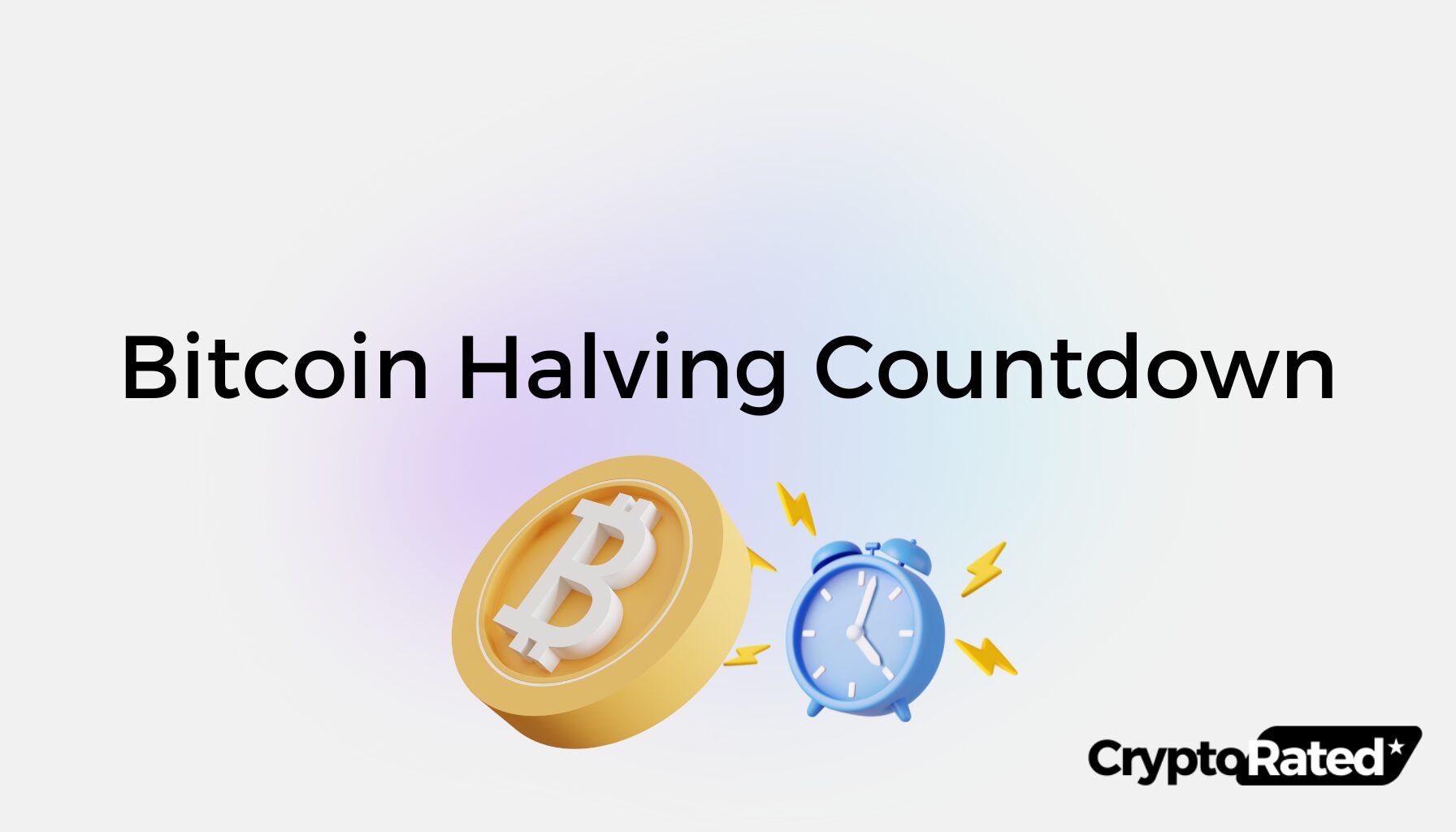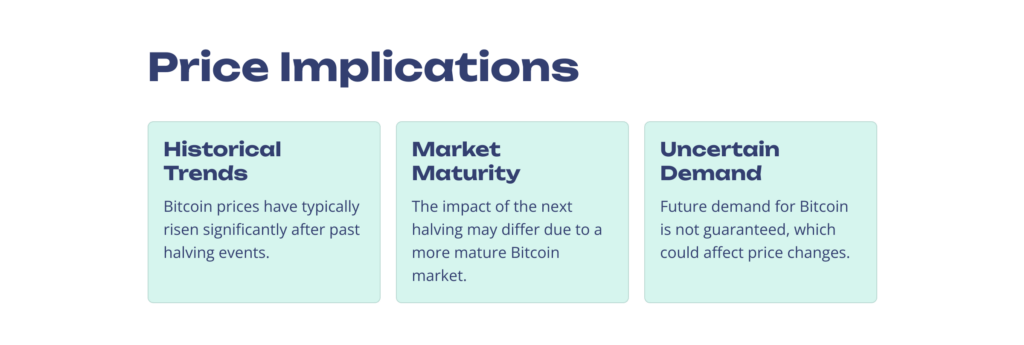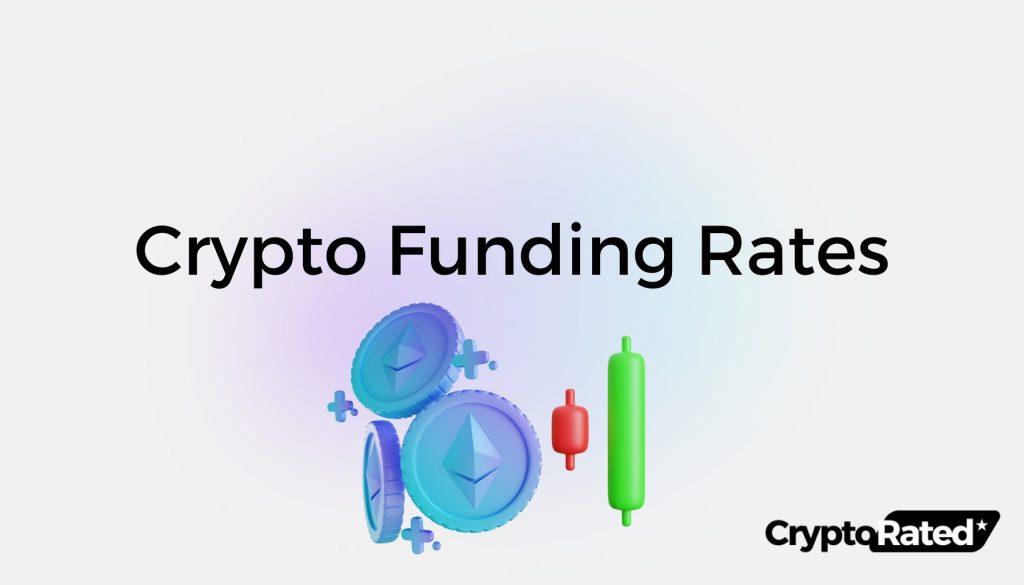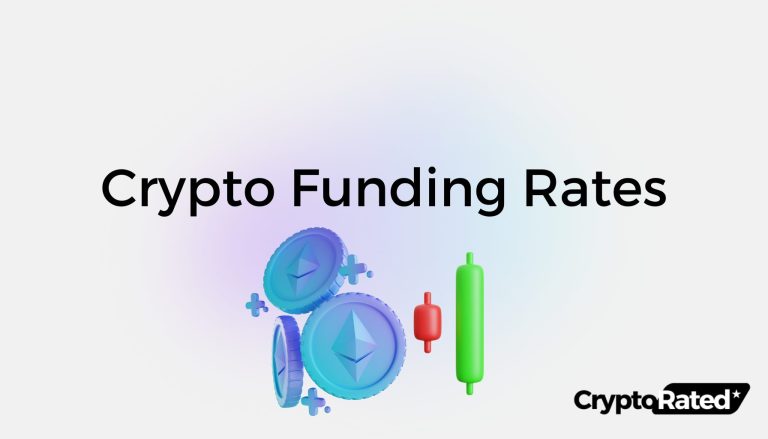
Loading…
What is a Bitcoin Halving?
A bitcoin halving is an event where the reward for mining new blocks is cut in half. This means that miners get 50% fewer bitcoins for verifying transactions. These events occur every 210,000 blocks, which is about every four years, until the total supply of 21 million bitcoins is reached.
Bitcoin halvings are crucial for traders because they limit the supply of new bitcoins entering the market. If demand stays strong or increases, this reduced supply can push prices up. This pattern has been observed in the past, with significant price increases before and after halvings. However, each halving happens under different market conditions, so price changes can vary widely.
When is the next Bitcoin halving?
The next bitcoin halving is anticipated to happen in April 2024. This event will take place when the blockchain reaches 740,000 blocks. Block rewards will decrease from 6.25 bitcoins to 3.125 bitcoins. While the exact date is not set, the blockchain typically generates one block every ten minutes on average, which guides the estimated timing for the halving.
Bitcoin Halvings: Key Events
Bitcoin halvings are crucial events in the cryptocurrency’s lifecycle. They happen every 210,000 blocks, reducing the reward for mining new blocks by 50%.
Key Halving Events:
- Launch (3 January 2009): Block reward started at 50 BTC.
- First Halving (28 November 2012): Reduced block reward to 25 BTC.
- Second Halving (9 July 2016): Further reduced block reward to 12.5 BTC.
- Third Halving (11 May 2020): Block reward decreased to 6.25 BTC.
- Fourth Halving (19 April 2024): Decreased block reward to 3.125 BTC.
- Fifth Halving (Expected 2028): Anticipated reward of 1.5625 BTC.
Each halving event is designed to control inflation and ensure the scarcity of Bitcoin, making it more valuable over time. These events will continue until the total supply reaches 21 million coins around the year 2140.
What Happened the Last Time Bitcoin Halved?
The most recent Bitcoin halving occurred on 19th of April, 2024. However, as of writing it is too early to determine the effects and broader implications of the halving on the market. During the third halving event (11th of May 2020), the reward for mining a block of Bitcoin was reduced from 12.5 to 6.25 BTC. Leading up to the halving, Bitcoin’s price climbed from $6,877.62 on April 11, 2020, to $8,821 at the time of the event.
Over the following year, Bitcoin’s price displayed significant upward momentum, reaching $49,504 by May 11, 2021. This trend is consistent with previous halving events in 2012 and 2016, where the price of Bitcoin increased substantially after each halving. Despite some periods of considerable volatility roughly 12-17 months post-halving, the value remained much higher than before the halving event. The cyclical nature of these halvings highlights the potential for future price increases following such events.
How Might the Bitcoin Halving Impact BTC’s Price?
The impact of the next bitcoin halving on BTC’s price is uncertain. Many people expect the price to increase, as it has in the past. This expected rise is largely due to the reduction in the supply of new bitcoins entering the market.

Factors to consider:
- The bitcoin market has matured since the last halving in 2020.
- There are more cryptocurrencies now competing for users.
- Demand for bitcoin may change and is not guaranteed to grow.
Live prices of bitcoin and other cryptocurrencies can provide insight into market trends as the halving event approaches.
Example table:
| Event Year | Block Reward Before Halving | Block Reward After Halving |
|---|---|---|
| 2020 | 12.5 BTC | 6.25 BTC |
| 2024 | 6.25 BTC | 3.125 BTC |
How Does Bitcoin Halving Work?
Effects of Halving on Miners
When the reward for mining a block is cut in half, the financial impact on miners can be substantial. Since mining consumes significant resources, such as electricity and specialized hardware, some miners may find that continuing their operations is no longer financially viable if the price of bitcoin does not increase to compensate for the reduced rewards. This could lead to some miners ceasing their activities, which might temporarily reduce the processing power in the network. Nonetheless, the software is designed to counterbalance this by adjusting the difficulty of mining to ensure that the rate at which blocks are added to the blockchain remains constant.

Future of Mining After All Bitcoins Are Mined
Once the total number of bitcoins reaches its cap of 21 million, miners will no longer earn new bitcoins from mining activities. However, they will still receive transaction fees from users who need to confirm their transactions. These fees will serve as an incentive for miners to continue verifying transactions. The maximum supply limit is expected to be reached around the year 2140. Beyond this point, bitcoin could become deflationary since coins can be permanently lost through errors such as sending them to incorrect addresses.
Why Does Bitcoin Halve?
Bitcoin undergoes a halving process due to its predefined software rules which were coded by an unknown individual or group under the pseudonym Satoshi Nakamoto. Although Satoshi never provided a clear explanation for Bitcoin halving, several theories have emerged to explain its purpose.
One theory suggests that Bitcoin’s early design aimed to distribute coins quickly to encourage participation in the network. Initially, higher rewards were offered to incentivize miners to join the network and validate transactions. As the network grew, the rewards were programmed to reduce, halving at regular intervals, with the assumption that the value of each bitcoin would rise over time due to increased adoption and limited supply.
Another perspective is that Bitcoin halving acts as a deflationary mechanism. In traditional fiat systems, central banks can print more money, which may lead to inflation. Bitcoin, however, has a fixed supply of 21 million coins, and new bitcoins are introduced at a decreasing rate due to halvings. This controlled supply rate helps protect against abrupt inflation and supports the value of the currency over time.
A notable criticism of Bitcoin’s halving mechanism and its capped supply is that it may lead to hoarding. Users might prefer to save their bitcoins rather than spend them, anticipating that the value will increase in the future. This behavior can contribute to boom and bust cycles, where users hold onto their coins during periods of growth and sell them off during price peaks, potentially destabilizing the market.
Some critics go further, comparing Bitcoin to a pyramid scheme. They argue that those who adopted Bitcoin early have gained disproportionate rewards, creating an imbalance in the distribution of wealth within the network.
Bitcoin continues to evolve, and while its halving process is sometimes debated, it remains a crucial element in maintaining the coin’s value and scarcity.
Besides monitoring the Bitcoin Halving date and its broader implications, other useful market metrics include total value locked tracker, fear and greed index, funding rates or Bitcoin open interest.
WRITTEN
Benjamin Vitaris
Seasoned crypto, DeFi, NFT and overall web3 content writer with 9+ years of experience. Published in Forbes, Entrepreneur, VentureBeat, IBTimes, CoinTelegraph and Hackernoon.




